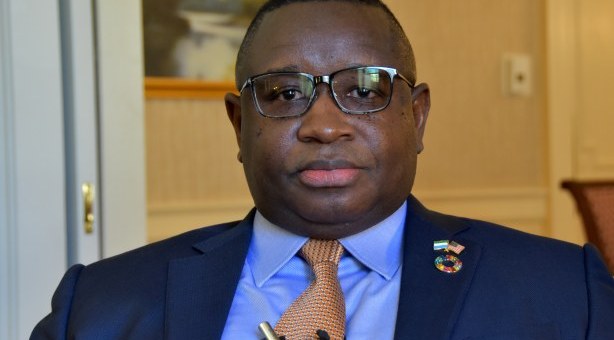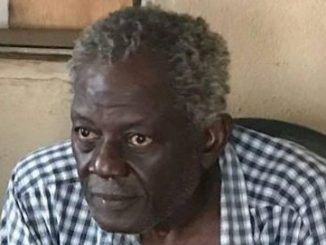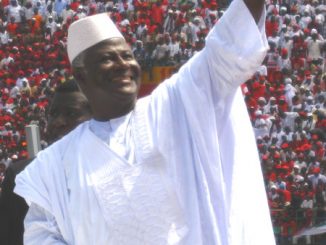
By Lennart Dodoo on April 1, 2020
MONROVIA – The United States government is dishing out an initial aid of US$274 million to lead the world’s fight against the novel coronavirus. At least 14 African countries and European countries are benefitting but America’s oldest African ally and its neighbor, Sierra Leone were left out.
“As part of this comprehensive and generous U.S. response, the State Department and USAID are providing an initial investment of nearly $274 million in emergency health and humanitarian assistance to help countries in need, on top of the funding we already provide to multilateral organizations such as the World Health Organization and UNICEF,” the Department of State announced.
Liberia has three confirmed cases of Covid-19 but the country had been faced with inadequate availability of logistics until China and ECOWAS recently donated a consignment of test kits and personal protective equipment (PPEs) to help in the fight against the disease.
The country partially shutdown with the discovery of the third case – a move that is now hard-hitting the already struggling economy.
But the U.S. did not consider Liberia in its humanitarian and health assistance response to the COVID-19 pandemic.
The aid, according to the State Department, includes nearly $100 million in emergency health assistance from USAID’s Global Health Emergency Reserve Fund and $110 million in humanitarian assistance from USAID’s International Disaster Assistance account, to be provided for up to 64 of the most at-risk countries facing the threat of this global pandemic. Through the State Department’s Bureau of Population, Refugees, and Migration, the UN Refugee Agency (UNHCR) will receive $64 million in humanitarian assistance to help address the threats posed by COVID-19 in existing humanitarian crisis situations for some of the world’s most vulnerable people.
U.S. government agencies are working together to prioritize foreign assistance based on coordination and the potential for impact. With today’s new funds, the United States is providing the following specific assistance:
Africa:
Angola: $570,000 in health assistance will help provide risk communication, water and sanitation, and infection prevention and control in key health facilities in Angola. This assistance comes on top of long-term U.S. investments in Angola including $613 million in health assistance and $1.48 billion total country investment over the past 20 years.
Burkina Faso: Nearly $2.1 million in health and humanitarian funding will go toward risk communication, water and sanitation activities, infection prevention and control, public health messaging, and more. Over the past 20 years, the United States has invested more than $222 million in health alone and more than $2.4 billion total in Burkina Faso.
Cameroon: $1.4 million in health assistance will help provide infection control in key health facilities, strengthen laboratories and surveillance, prepare communities, and bolster local messaging. This assistance builds upon more than $390 million in U.S. health assistance and more than $960 million total country investment over the past 20 years.
Cote d’Ivoire: $1.6 million in health assistance to help the government prepare laboratory systems, activate case-finding and event-based surveillance, support technical experts for response and preparedness, risk communication, infection prevention and control, and more. Over the past 20 years, the United States has invested nearly $1.2 billion in Cote d’Ivoire’s health, and more than $2.1 billion in long term development and other assistance.
Ethiopia: $1.85 million to counter COVID-19 will go toward risk communication, water and sanitation activities, infection prevention, and coordination. This assistance joins the long-term U.S. investment in Ethiopia, including nearly $4 billion in health alone and more than $13 billion in total assistance over the past 20 years.
Kenya: $1 million in health assistance will bolster risk communication, prepare health-communication networks and media for a possible case, and help provide public health messaging for media, health workers, and communities. This COVID-19 specific assistance comes on top of long-term U.S. investment in Kenya, including $6.7 billion in health assistance alone, and more than $11.7 billion in development and other assistance over the last 20 years.
Mozambique: $2.8 million in emergency health funding will help provide risk communication, water and sanitation, and infection prevention and control in key health facilities in Mozambique. The United States has invested more than $3.8 billion in health assistance and nearly $6 billion total investment, including development and other assistance, over the past 20 years.
Nigeria: More than $7 million in health and humanitarian funding will go toward risk communication, water and sanitation activities, infection prevention, and coordination. This assistance joins more than $5.2 billion in U.S. health assistance and more than $8.1 billion in total assistance for Nigeria over the past 20 years.
Rwanda: $1 million in health assistance will help with surveillance and case management efforts in response to COVID-19. This comes on top of long-term U.S. investment in Rwanda including more than $1.5 billion in health and more than $2.6 billion in total assistance over the past 20 years.
Senegal: $1.9 million in health funding will go toward risk communication, water and sanitation, infection prevention and control, public health messaging, and more. In Senegal, the U.S. has invested nearly $880 million in health alone, and nearly $2.8 billion in total assistance over the past 20 years.
South Africa: $2.77 million in health assistance to counter COVID-19 will support risk communication, water and sanitation, infection prevention and control, public health messaging, and more. This assistance joins nearly $6 billion invested in health, and more than $8 billion in total assistance, by the United States for South Africa in the past 20 years.
Tanzania: $1 million in health assistance will help provide risk communication, water and sanitation, infection prevention and control, public health messaging, and more. The United States has invested nearly $4.9 billion in health alone and more than $7.5 billion total for Tanzania over the past 20 years.
Zambia: $1.87 million in health assistance will go toward risk communication, water and sanitation, infection prevention and control, public health messaging, and more. This new assistance joins nearly $3.9 billion in U.S. health assistance and nearly $4.9 billion total U.S. assistance for Zambia over the past 20 years.
Zimbabwe: $470,000 in health assistance will help the government to prepare laboratories for large-scale testing, support case-finding activities for influenza-like illnesses, and implement a public-health emergency plan for points of entry. This builds on a history of U.S. investments in Zimbabwe – nearly $1.2 billion in health alone, and nearly $3 billion total over the past 20 years.
.FPA.



